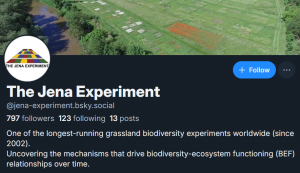New publication from Bonato Asato et al. in Ecology and Evolution: On the phenology of soil organisms: Current knowledge and future steps
Phenology is the study of timing of periodic activities in biological life cycles. It describes an inherent component of ecosystem dynamics, and shifts in biological activity have been increasingly recognized as an indicator of global change. Although phenology is mainly studied above the ground, major ecosystem processes, such as decomposition, mineralization, and nutrient cycling, are soil-dependent. Therefore, the phenology of soil organisms is a crucial, but understudied, aspect of terrestrial ecosystem functioning. We performed a systematic review of 96 studies, which reported 228 phenological observations, to evaluate the current knowledge of soil microbial and animal phenology. Despite the increasing number of soil phenology reports, most research is still concentrated in a few countries (centered in the Northern Hemisphere) and taxa (microbiota), with significant gaps in the most diverse regions of the globe (i.e., tropics) and important taxa (e.g., ants, termites, and earthworms). Moreover, biotic predictors (e.g., biodiversity and species interactions) have rarely been considered as possible drivers of soil organisms’ phenology. We present recommendations for future soil phenology research based on an evaluation of the reported geographical, taxonomic, and methodologic trends that bias current soil phenology research. First, we highlight papers that depict good soil phenology practice, either regarding the research foci, methodological approaches, or results reporting. Then, we discuss the gaps, challenges, and opportunities for future research. Overall, we advocate that focusing both on highly diverse ecosystems and key soil organisms, while testing for the direct and indirect effects of biodiversity loss and climatic stressors, could increase our knowledge of soil functioning and enhance the accuracy of predictions depicting the effects of global change on terrestrial ecosystem functioning as a whole.

Reference:
Bonato Asato, A. E., C. Wirth, N. Eisenhauer, and J. Hines. 2023. On the phenology of soil organisms: Current knowledge and future steps. Ecology and Evolution 13:e10022. https://doi.org/10.1002/ece3.10022.



